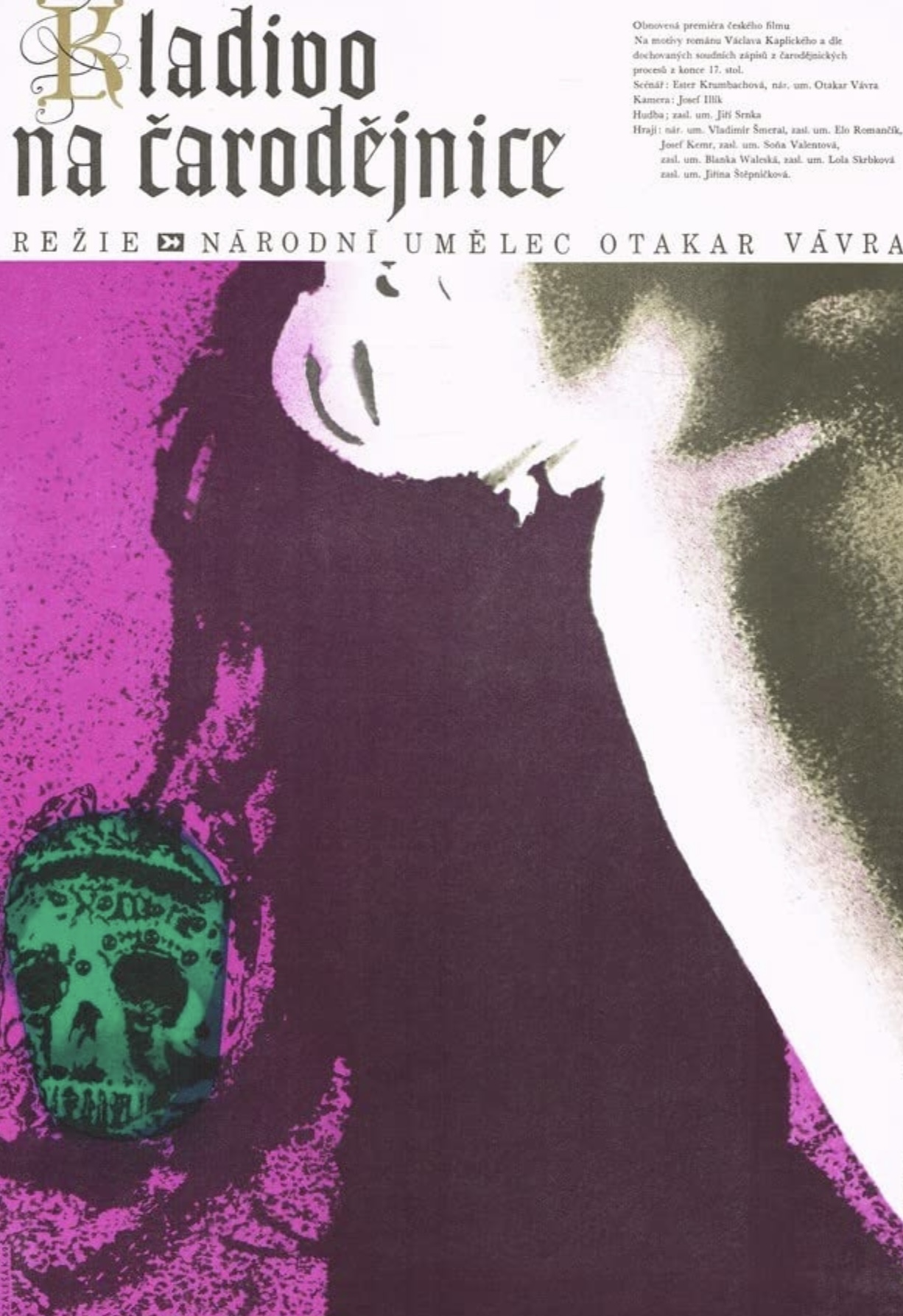- Directed by Otakar Vavra
- Written by Václav Kaplický, Otakar Vávra, Ester Krumbachová
- Stars Vladimir Smiral, Elo Romancik, Josef Kemr
- Run Time: 1 Hour, 46 Minutes
- Trailer: https://www.youtube.com/watch?v=SQgXY7_moVc&t=2410s

Spoiler-Free Judgment Zone
It’s a low action visual feast. Well acted, great cinematography, impressive costumes and set. A little long after a while, but a fascinating watch.
Synopsis
“Sin entered the world through women. Woman is sin. A woman’s womb is the gateway to Hell.” We see scenes of groups of naked women bathing, laughing, and getting massages. We then cut to a choir singing in church. They all stop and do Communion. An old woman slips in at the end of the line, wanting to partake as well, but she spits the wafer into a napkin and takes it away. An old man spots her and pulls her aside. She begs forgiveness because her cow has run dry. The priest calls for the sheriff.
She’s just part of a whole coven of witches, as the priest reveals to the Countess and the town leaders. They bring the old woman in to explain herself. They needed the sacred wafer for her neighbor’s cow, which had stopped giving milk. The old lady accidentally incriminates her friend, an herbalist and healer. The town elders debate whether this is just superstition or a serious case of Satanism. They decide to call for Boblig, a retired inquisitor, to get to the truth of the matter.
Boblig goes to see the Countess and he talks about the requirements of an inquisition. It’s quite an expensive production. He soon sets to work inquisiting. Boblig soon reports that there are several witches on the Countess’s estate, which upsets her. He dilutes his wine with hot water. Boblig goes to see Lautner, and there’s a disagreement with Lautner’s cook.
Meanwhile, they start torturing the accused witches in the dungeon. The old woman from earlier just says exactly what they prompt her to say, which is bad for all the others. Under torture, they all confess to whatever they’re told to confess to. When one of them accuses Boblig of being with them, he has the guard strangle her. Boblig blames it on the devil.
The priest starts talking to the town elders against Boblig. As is always the case, the accusations of witchery get out of control. Three women are burned at the stake. The women scream that they were tortured into confessing, and the priest really questions what they are doing. Although the priest asks for Boblig to stop the trials, more women are rounded up. Boblig starts plotting to have Deacon Lautner arrested. Lautner goes to see the bishop to complain, but the bishop already knows about the complaints against Lautner’s cook, so he’s a suspect as well.
More arrests are made, including the deacon’s cook. Paranoia sets in all over town. Even the sheriff and members of the tribunal are arrested. Business owners are arrested. It starts getting very political. The cook is tortured and confesses, and Lautner is arrested. Lautner’s trial goes on for a while, and he continues to deny everything.
The bishop himself asks the tribunal about Lautner. Thirty-Six witnesses testified that he was there during the witch meetings. The bishop finally decides to allow Lautner to be tortured. One of the tribunal members resigns rather than judge Lautner. Eventually he confesses as well but refuses to implicate anyone else.
Boblig revels in his power and watches Lautner burn. We read that Boblig lived to a ripe old age.
Commentary
This is black and white, but it looks like it was an expensive production with a large cast. The cinematography and casting are excellent, as is the scale of the whole thing. It’s well acted, the story is logical, and it’s all very well done. It’s a bit long, but that just heightens the suspense. There’s no evidence of witchcraft or real witches in this, but the torture scenes are pretty detailed and brutal.
The crazy man talking about the evils of women between the various scenes is really creepy, but in a cool way. I kept noticing how he looked like Willem Dafoe crossed with Marty Feldman.
It’s something like “The Crucible” as the witches start to accuse each other and incriminate other women. Apparently, it was so similar to Stalinism that it wasn’t allowed to be shown in the Eastern Bloc until 1989. Supposedly, much of the testimony is taken from actual historical records, but it’s hard to know how much of this is a true story.
On the other hand, it’s really long, it feels really long, and there’s nothing we haven’t seen in other films. It’s historically important, but definitely doesn’t hold up very well today.

